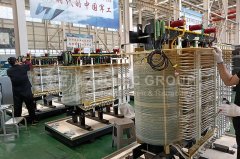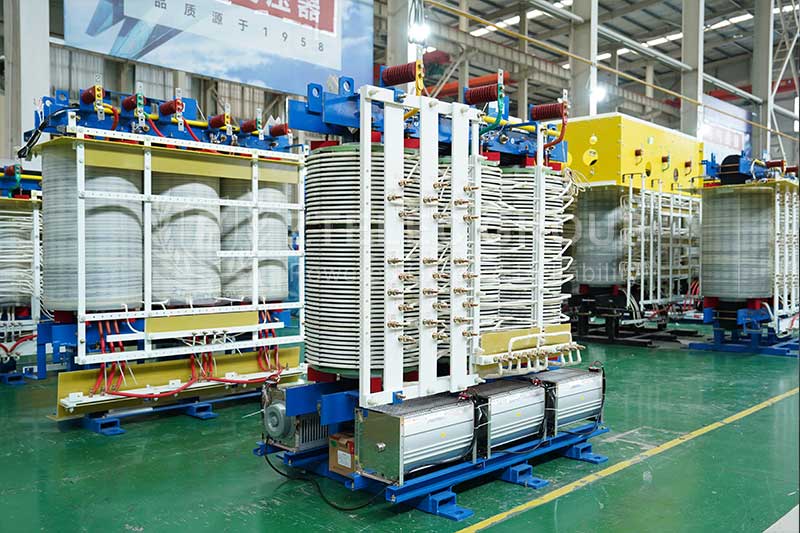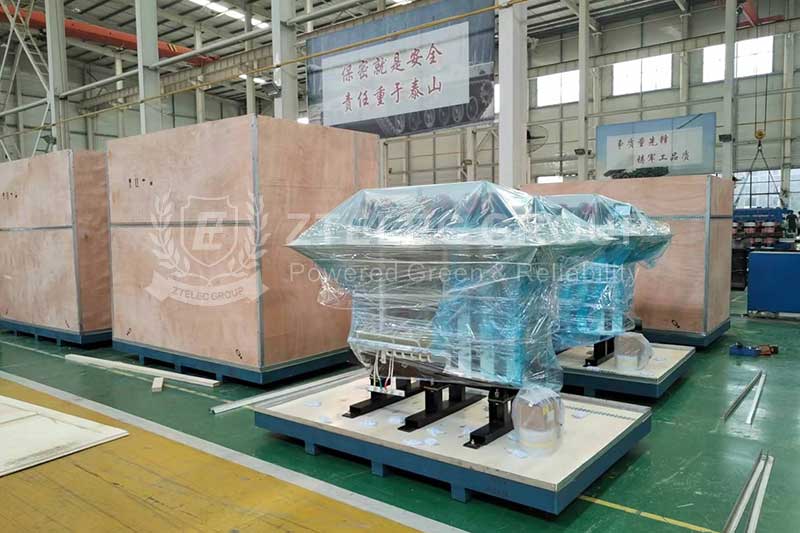The Ultimate Guide to Dry-Type Rectifier Transformers
Dry-type rectifier transformers are crucial in modern power electronics, widely used across industries like manufacturing, energy, and transportation. As the core of power transmission and conversion, they accurately convert AC power into specific voltages and currents, ensuring stable, reliable DC power supply for downstream loads.
Working Principle and Structure of Dry-Type Rectifier Transformers
Working Principle
Dry-type rectifier transformers operate on electromagnetic induction. AC passing through the primary coil generates an alternating magnetic field in the iron core, inducing voltage in the secondary coil. Unlike standard transformers, their secondary output connects to rectifier circuits, using methods like half-wave, full-wave, or bridge rectification to convert AC into DC, meeting diverse DC load demands.
Structural Components
- Iron Core: Made from laminated silicon steel for efficient magnetic conduction.
- Winding: High-voltage and low-voltage coils made of insulated copper or aluminum wire.
- Insulation Material: Uses epoxy resin or impregnation for electrical isolation and safety.
- Cover Assembly: Protects and houses the transformer with integrated grooves and locking mechanisms.
- Connection Parts and Base Frame: Ensures stable installation and secure mounting.
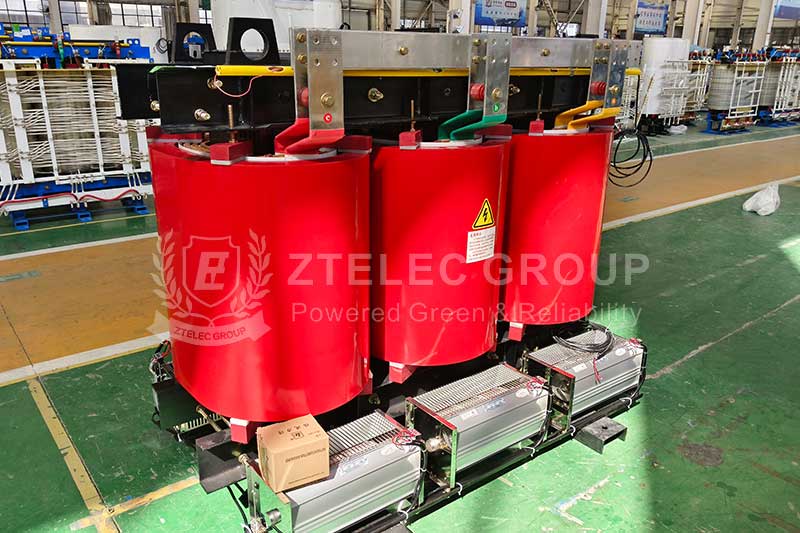
Performance Characteristics of Dry-Type Rectifier Transformers
Advantages
Safety and Reliability: No transformer oil, eliminating fire and leak risks, ideal for high-rise buildings, subways, and data centers.
Environmental Protection and Energy Saving: Lower losses and higher efficiency align with green energy trends.
Easy Maintenance: Simplified maintenance without oil testing or replacement.
Flexible Installation: Compact, lightweight, adaptable for indoor and outdoor settings.
Limitations
Weaker Heat Dissipation: Relies on natural or forced air cooling, limiting overload capacity.
Capacity Constraints: Typically smaller single-unit capacity, requiring parallel operation for large loads.
Key Points for Selecting Dry-Type Rectifier Transformers
Load Characteristics: Match transformer capacity and voltage to load type and power factor.
Environmental Conditions: Account for temperature, humidity, altitude, and dust in selection.
Insulation and Protection Levels: Choose proper insulation class (F, H) and protection rating (IP20, IP23) for site conditions.
Economic Efficiency: Balance cost, operational losses, and lifespan for maximum value.
Installation and Commissioning of Dry-Type Rectifier Transformers
Installation
Foundation: Ensure a flat, strong base to support the transformer weight and vibration.
Location: Install in dry, ventilated areas free of corrosive gases and allow enough space for cooling.
Electrical Connection: Correctly connect primary and secondary windings as per schematics, ensuring tight, reliable contacts.
Commissioning
Insulation Resistance Test: Verify insulation integrity between windings and ground.
DC Resistance Test: Check for short circuits or open circuits in the windings.
No-Load Test: Confirm magnetic core performance with primary energized, secondary open.
Load Test: Gradually load the transformer and monitor voltage, current, and temperature behavior.
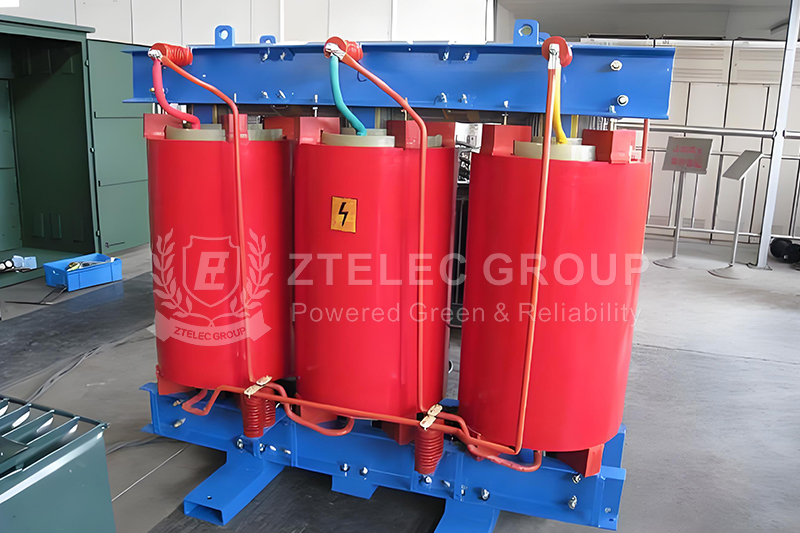
Operation, Maintenance, and Troubleshooting
Operation and Maintenance
Regular Inspection: Check appearance, temperature, connections, and cooling system performance.
Cleaning: Remove dust regularly using dry cloths to ensure heat dissipation and insulation quality.
Monitoring: Install sensors to track temperature and current, recording data for early fault detection.
Fault Handling
Overheating: Inspect for overloading, cooling issues, or internal faults causing excessive heat.
Insulation Failure: Address short circuits caused by aging, moisture, or voltage surges promptly.
Abnormal Sounds: Identify and fix mechanical looseness, core vibration, or winding deformation immediately.
With proper selection, installation, and maintenance, dry-type rectifier transformers can deliver safe, efficient, and reliable performance across a wide range of applications.
- more+releated article
- 2025-04-28The Ultimate Guide to Dry-Type Rectifier Trans
- 2025-04-28Innovative applications and technological adva
- 2025-04-25Multifunctionality of Dry-Type Rectifier Trans
- 2025-04-25What are the specific steps in the production
- 2025-04-24What is a dry-type rectifier transformer?
- 2025-04-24What are the special properties of phenolic co
- 2025-04-23FRP copper foil composite tube
- 2025-04-23Revealing the Advantages of Dry-Type Rectifier
- 2025-04-23Phenolic Paper Sheet vs. Phenolic Cotton Cloth
- 2025-04-22The Popularity of Dry-Type Transformers: Key R

